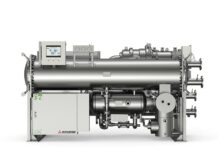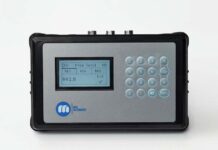
As global temperatures rise, so does the need for cooling. Therefore, under such circumstances, there can’t be any doubt that the consumption and demand of electricity will continue to increase.
According to a UNEP report (2023), “On current growth trends, cooling equipment represents 20% of total electricity consumption today – and is expected to more than double by 2050. Greenhouse gas emissions from power consumption will increase, alongside leakage of refrigerant gases – most of which have a much higher Global Warming Potential (GWP) than Carbon Dioxide (CO2). Under a business-as-usual scenario, emissions from cooling are predicted to account for more than 10% of global emissions in 2050.”

To improve the present situation across the globe, keeping sustainability at the core, lots of improvements are being done in the cooling systems and solutions. Although new and more efficient cooling technologies or devices are coming to the market every day, inefficiency is something that can be reduced but can’t be eliminated completely – it is always a journey towards betterment. That is why researchers around the world are continuing their works in search of new cooling methods. This time I will present two recent highly promising developments in this field.
World’s first kilowatt-scale elastocaloric cooling device
Researchers at the Hong Kong University of Science and Technology (HKUST) have developed the world’s first kilowatt-scale elastocaloric cooling device. The device can stabilize indoor temperatures at a comfortable 21-22°C in just 15 minutes, even when outdoor temperatures reach between 30-31°C, marking a significant breakthrough toward the commercial application of elastocaloric solid-state cooling technology.
Background
As global warming intensifies, the demand for air conditioning and cooling has been growing, with cooling already accounting for 20% of global electricity consumption. Mainstream vapour compression cooling technology relies on refrigerants with high Global Warming Potential (GWP). As an eco-friendly alternative, solid-state cooling technology based on the elastocaloric effect of Shape Memory Alloys (SMAs) has drawn substantial focus from both academia and industry due to its zero greenhouse gas emissions and high energy efficiency potential.
However, the maximum cooling power of previous elastocaloric cooling devices was around 260 watts, which could not meet the kilowatt-scale requirement for commercial air conditioning. The HKUST research team, led by Prof. SUN Qingping and Prof. YAO Shuhuai, both Professors from the Department of Mechanical and Aerospace Engineering (MAE), identified that this bottleneck stems from two core issues: i) the difficulty in balancing the Specific Cooling Power (SCP) of the refrigerant with the total active mass; and ii) insufficient heat transfer efficiency during high-frequency operation.
Action
To overcome these limitations, the research team proposed an ‘SMAs in series – fluid in parallel’ multi-cell architecture design (Figure 1a). This architecture serially connects 10 elastocaloric cooling units along the direction of force application, with each unit containing four thin-walled nickel-titanium alloy tubes, totaling a mass of only 104.4 grams. The nickel-titanium tubes feature a high surface area-to-volume ratio of 7.51 mm-1 that significantly improves heat exchange efficiency. Meanwhile, the parallel fluid channel design keeps system pressure below 1.5 bar, ensuring stable high-frequency operation.

Photo credit: Nature Press
Another key innovation is replacing traditional distilled water with graphene nanofluid, a cutting-edge heat transfer medium with exceptional thermal conductivity. Experiments showed that graphene nanofluid, at just 2 grams per litre concentration, conducts heat 50% more efficiently than distilled water (Figure 1d). The diameter of its nanoparticles (0.8 micrometers) is much smaller than the width of the fluid channels (150-500 micrometers), avoiding blockage risks. X-ray tomography (Figure 2b) confirmed that the nickel-titanium tubes maintained uniform compressive deformation under a stress of 950 megapascals without buckling failure.

Photo credit: Nature Press
At a high frequency of 3.5 Hz, the device achieved a specific cooling power of 12.3 W/g and a total cooling power of 1,284 watts (under zero temperature lift conditions), demonstrating its practical viability in real-world conditions.
In practical application tests, the device successfully cooled a 2.7 m3 model house (Figure 3) in a summer outdoor environment with temperatures between 30-31 0C, stabilizing the indoor temperature at a comfortable 21-22 0C in 15 minutes.

Photo credit: Nature Press
Compared with existing solid-state cooling technologies (Figure 4), this pioneering device leads in terms of cooling power and temperature lift performance. Its SCP value (12.3 W/g) nearly triples the previous record of liquid heat transfer elastocaloric devices (4.4 W/g), and it has for the first time broken through the kilowatt-scale cooling threshold.

Photo credit: Nature Press
Communications from the team
Focusing on their work, Prof. Sun Qingping said, “This achievement demonstrates the potential for large-scale application of elastocaloric cooling technology. We are working with the industry to drive its commercialisation. As global regulations on Hydrofluorocarbons (HFCs) tighten, this zero-emission, energy-efficient cooling technology is poised to reshape the air conditioning industry and provide a key technical solution for carbon neutrality. Consumers will also benefit from lower energy bills while the technological advancements enable more compact cooling devices that save valuable indoor space.”
Highlighting the potential of their research, Prof. YAO Shuhuai said, “In the future, the system’s cooling performance can be further improved by developing new elastocaloric materials and optimizing the rotary drive architecture. These improvements can help achieve larger cooling powers, meaning indoor environments can be cooled down in significantly less time.”

Photo credit: Nature Press
Heat pumps without compressors
At the beginning of this year (2025), working on the vision ‘Highly efficient solid-state heat pumps without compressors’, researchers from Fraunhofer completed a project, called ‘ElKaWe’. The team made great progress in terms of material and system design, and set up the first electrocaloric demonstrators to show the vast potential of this technology.
Today’s heat pumps work on the basis of compressors, and are used for heating and cooling alike. Provided these heat pumps are powered by electricity from renewable sources, they can be a key element of the energy transition. Fraunhofer researchers want to revolutionize heat pump technology with an entirely novel concept: solid-state heat pumps based on electrocaloric materials that do not run on harmful refrigerants and could potentially be more efficient than compressor-based systems.
ElKaWe project
ElKaWe is the short form of Electrocaloric Heat Pump in German. Six Fraunhofer institutes worked together on the main technological components of the electrocaloric systems. Commenting on the project, Dr. Kilian Bartholomé of Fraunhofer IPM, said, “ElKaWe has generated a leap forward in terms of material, electronic components and heat transfer. While we still have a long way to go, these advances are promising steps towards marketability.”
Electrocaloric materials
Among so far identified electrocaloric materials, there are promising polymers, ceramics and hybrid materials. The electrocaloric material plays a key role in making electrocaloric heat pumps efficient and durable.
Action
The consortium developed and tested various polymer and ceramic materials. A team at Fraunhofer IAP came up with thin, electrocaloric polymer films with a high dielectric strength to make up a component with up to ten layers, setting new international standards. Fraunhofer IKTS developed ceramic multilayer components based on PMN-PT (lead magnesium niobate/lead titanate) that meet the high requirements for dielectric strength and operating frequency.
Initial long-term testing showed the ceramic components to be extremely stable. No changes to the electrocaloric effect occurred after 70 million cycles. The lead-free Barium-Strontium-Stannate-Titanate (BSSnT) proved to be a promising ceramic material for making cost-efficient electrocaloric components that meet current RoHS (Restriction of Hazardous Substances) guidelines.
Fast heat transfer through heat pipes
The industry had been witnessing a bottleneck in terms of the efficiency of electrocaloric heat pumps. The faster the heat dissipates, the more powerful is the system. So, the Fraunhofer team of researchers employed active Elastocaloric Heat Pipes (AEH) to enhance heat transfer rates.
In their method, the latent heat transfer is achieved by the evaporation and condensation of a fluid on the caloric material. The fluids used here were ethanol and water – a great advantage over conventional heat pumps.
Within the ElKaWe project, Fraunhofer IPM’s patented AEH design was integrated into an electrocaloric system for the first time. The approach based on heat pipes makes for considerably faster cycle frequencies than conventional active pumping of a liquid. The liquid should evaporate and condense on the surface of the electrocaloric material up to ten times per second. This allows a lot of heat to be transported using little material, making it possible to build particularly cost-efficient systems in the future.
Fraunhofer FEP developed super-hydrophilic layers that are stable over the long term and make evaporation from the surface particularly efficient. To prevent electrical breakdowns, Fraunhofer LBF also developed a process to embed the electrodes of the electrocaloric segments in epoxy resin.
The high Coefficient of Performance (CoP) of caloric heat pumps also depends on it having powerful electrical controls. During the ElKaWe project, Fraunhofer IAF researchers designed a dedicated circuit topology for electrocaloric heat pumps. The GaN-based multilevel DC/DC converter achieves an electrical efficiency of 99.74% – setting new global standards in conversion efficiency, which was previously below 90%.
Within the ElKaWe project, Fraunhofer IPM’s patented AEH design was integrated into an electrocaloric system for the first time…
A technology with tremendously high potential
Across three different demonstrator systems, the Fraunhofer researchers showed that all the components function together, achieving the expected system performance. According to simulations, the efficiency of electrocaloric heat pumps with today’s materials is already equal to that of compressor systems.
Analysis of the different classes of materials showed that there is great potential for another increase of the CoP. Another rise in the efficiency of electrocaloric systems is therefore to be expected.
View of a project advisory committee member
Commenting on the development, Christian Vogel, who closely supported the research as a member of the project advisory committee, informed, “The interdisciplinary team worked together extremely well, solving key questions. The great potential of electrocaloric technology was clearly demonstrated.”
By P. K. Chatterjee (PK)








